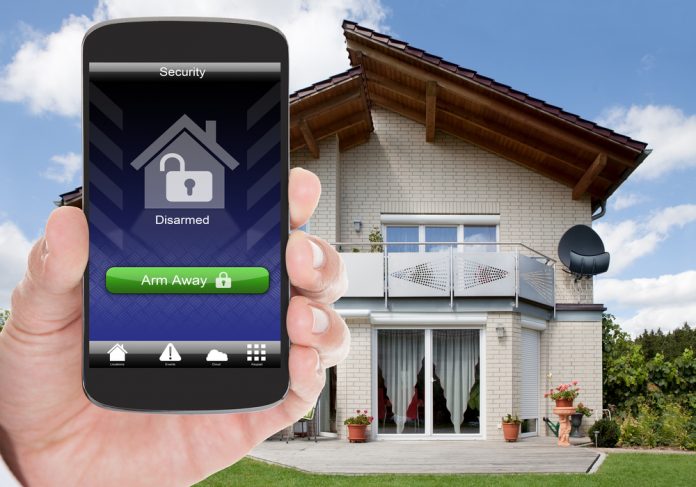Did you know that a driveway alarm system is an excellent way to keep tabs on anyone pulling up to your home? A wireless driveway alarm system is activated via motion-detection sensors and will notify you that someone is outside your home.
The following information will provide all the details you need to know when you’re interested in using this type of technology to beef up your home security. You’ll discover the difference between various types of systems and also learn how to select the best driveway alarm in the process.
What Is a Driveway Alarm System?
A driveway alarm is a type of WiFi device that keeps track of any movement on your driveway and notifies you about it. Your alarm will detect anything that creates a disturbance. This might include:
- Cars
- Animals
- People
The reason to use one of these systems is safety. You’ll know instantly whenever someone may be trespassing on your property. A driveway alarm system will work well whether you have a long driveway to keep track of or even a short one that isn’t easy to see from your windows.
How Does a Driveway Alarm Operate?
Your system consists of two simple components:
- Transmitter
- Receiver
You’ll conceal the transmitter near the driveway. It runs on batteries and is typically placed at the entrance or side of your driveway. The receiver plugs into an outlet. This gets placed in your home so it’s ready to alert you of driveway movement.
On the other hand, you have the option of selecting a wireless receiver and taking it with you on the run. No matter the type of receiver you select, your transmitter sends its signal over to your receiver and the receiver will either light up or make a sound. Some receivers will both light up and make a sound in order to be extra sure you get the message.
Various Types of Driveway Alarm Systems
You’ll find that there are two distinct categories of driveway alarms.
Detection type:
This kind of alarm picks up on when vehicles, animals or people are around. It’s important to know why you need the alarm. Is it mainly for trespassers or to possibly detect deer around the house?
Wireless or hard wired:
Neither one is better than the other. It’s all a matter of preference.
Sensor Types
There are a few different kinds of sensors your driveway alarm may utilize. Here are the details on each type:
Infrared sensor:
This is the wireless type. It uses heat to detect movement. It sends a signal to the receiver whenever a warm object crosses its beam. This is a useful option when the goal is to pick up on people, cars, and animals. An infrared sensor system is affordable and easy to install.
Magnetic probe sensor:
You’ll find both wireless and hard-wired options here. A magnetic probe driveway sensor is meant to detect metal objects.
This is a quality option when your focus is picking up on vehicles entering the driveway. Birds, animals, and people won’t set it off. This type of driveway alarm is easily hidden after installation. It is a more expensive option when compared to an infrared sensor system.
Photo beam sensor:
If your driveway alarm system uses a photo beam sensor, then it will use two or more sensors to do its job. Sensors are located at either end. The only time you’ll receive a warning is when all of the sensors are triggered at the same time.
This helps prevent false alarms and this option is great when the goal is to detect people and cars. It’s unlikely that a bird or animal is going to trip all sensors at the same time.
Rubber hose sensor:
This option is mainly used to detect a car or truck entering your driveway. A rubber hose is used to enclose the sensors and is placed on the driveway. Any vehicle driving over the hose will place pressure on it and trigger the signal over to its receiver.
This is an inexpensive option. Keep in mind that you’ll need to replace it once wear and tear deteriorates its effectiveness. Animals and people can trigger the alarm if they happen to step on the hose.
Additional Driveway Alarm Features
There are many features that come with the various available driveway alarm systems. These exciting technology options make it simple to know whenever people or vehicles are around your property. Let’s look at two important features to think about before buying your alarm system.
Security zones:
There are systems available that provide an option for adding in additional sensors throughout various security zones. They will typically include four or more zones.
This means you could use the same receiver in the house to detect motion in different areas of your property. For example, you can expand the security features beyond the driveway and include movement at the side of the house, the backyard, etc.
Your receiver has the capability to tell you the exact zone or area that movement is happening. Some receivers provide you a separate and distinct tone for each security zone sensor. Other receivers might use different colors to indicate the zone.
Supervised wireless transmitters:
This is a great feature to look for because the system will notify you when the batteries are running low inside the transmitter. You’ll receive a certain tone on the receiver for movement and a different tone or signal when the batteries need replacing. This is vital because you need to know when those batteries are close to being dead.
You’ve learned what you need to know about driveway alarm systems. Your next simple step is to purchase one and put it to good use.
Find a Home-Based Business to Start-Up >>> Hundreds of Business Listings.

















































